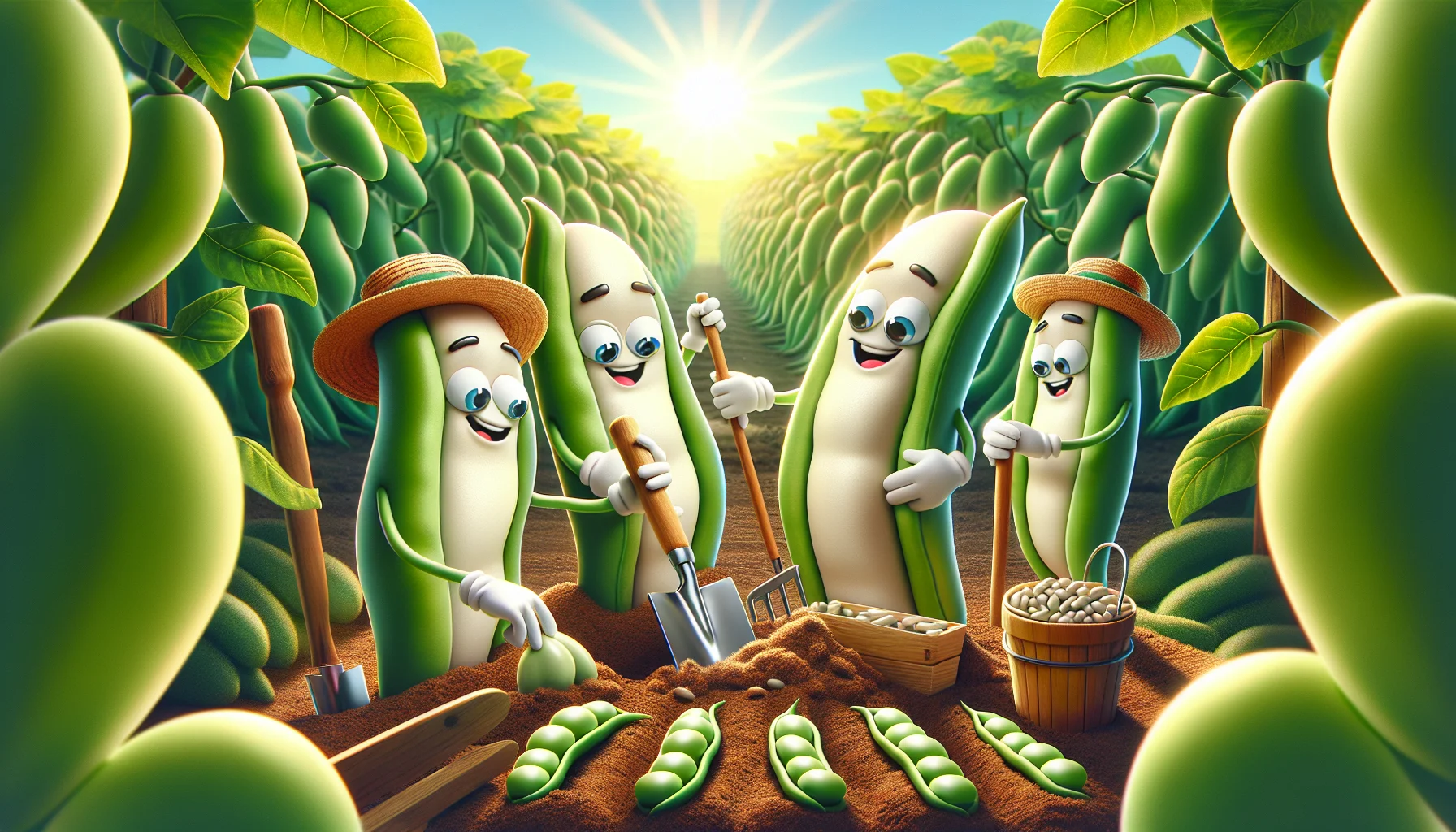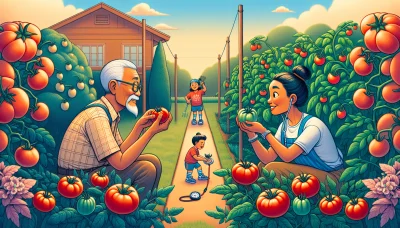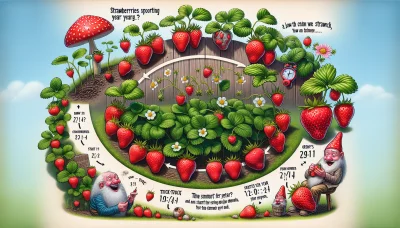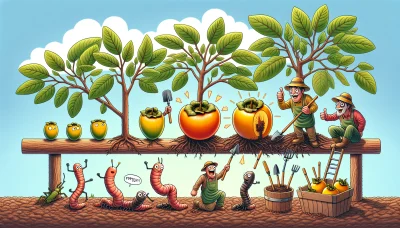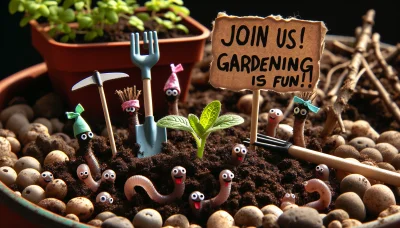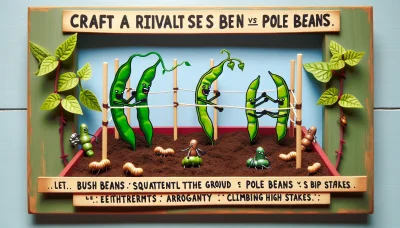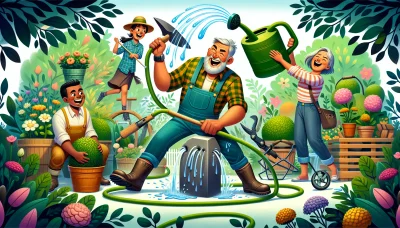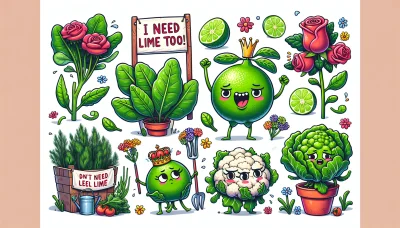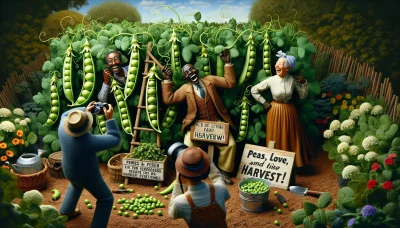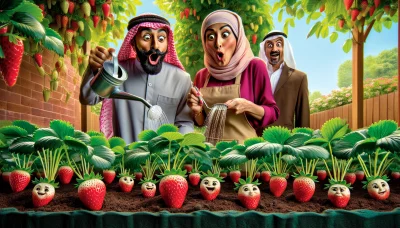Blanch green beans Quiz
Test Your Knowledge
Question of
Blanching Green Beans: A Gardener's Guide
Blanching green beans is a crucial step for gardeners who wish to preserve the freshness, color, and nutritional value of their harvest. This quick process of scalding the beans in boiling water and then plunging them into ice water stops enzyme actions which can cause loss of flavor, color, and texture. By blanching green beans before freezing, gardeners can ensure that their vegetables maintain their quality and are ready to be enjoyed at a later date.
Why Blanch Green Beans?
Blanching green beans is a simple cooking process that involves briefly boiling the beans and then plunging them into ice water. This technique offers several benefits that make it a popular choice for preparing green beans. One of the primary advantages is the preservation of the beans' vibrant green color. Without blanching, green beans can turn a dull green when cooked for longer periods or when frozen.
Another significant benefit of blanching green beans is the preservation of their texture. Blanching stops the enzymes that can lead to spoilage, maintaining the beans' crispness even after freezing. This makes blanched green beans ideal for salads, stir-fries, and as a healthy, ready-to-eat snack.
Furthermore, blanching helps in preserving the nutrients found in green beans. This quick heat treatment can deactivate enzymes that would otherwise break down vitamins and minerals during storage. As a result, blanched green beans retain more of their nutritional value, including vitamins A and C, potassium, and fiber, compared to their non-blanched counterparts.
In conclusion, blanching green beans is a worthwhile step for anyone looking to maintain their appealing color, crisp texture, and nutritional content. Whether you're preparing a meal or prepping vegetables for storage, blanching is a quick and easy way to enhance the quality of green beans.
Step-by-Step Guide to Blanching Green Beans
- Wash the green beans thoroughly in cold water.
- Trim the ends off the green beans.
- Bring a large pot of salted water to a boil.
- While the water is heating, prepare a large bowl of ice water.
- Once the water is boiling, add the green beans to the pot.
- Boil the green beans for 2 to 3 minutes, or until they are bright green and tender.
- Immediately remove the green beans from the boiling water with a slotted spoon or tongs.
- Plunge the green beans into the bowl of ice water to stop the cooking process.
- Leave the green beans in the ice water for a few minutes until they are completely cool.
- Drain the green beans and pat them dry with a towel.
- Your blanched green beans are now ready to be used in your favorite recipe or stored for later use.
Gardening Tips for Growing Green Beans
Green beans are a popular and rewarding crop for home gardeners. With the right conditions, they can produce an abundant harvest. Here are some essential tips for growing green beans in your garden.
Soil Preparation: Green beans thrive in well-draining soil with a neutral pH. Before planting, work the soil by turning it over and breaking up large clumps. It's beneficial to mix in compost or aged manure to enrich the soil. Ensure the planting site gets plenty of sunlight, as green beans need full sun to produce well.
Planting: Plant green bean seeds directly in the garden once the danger of frost has passed and the soil has warmed. Plant seeds about 1 inch deep and 2 inches apart in rows that are spaced 18 to 24 inches apart. Water the seeds gently after planting. For a continuous harvest, consider planting a new round of seeds every two weeks.
Care: Keep the soil moist but not waterlogged, as green beans do not like to sit in water. A layer of mulch can help retain soil moisture and suppress weeds. Once the plants are a few inches tall, thin them so they are 4 to 6 inches apart. This gives each plant enough space to grow and reduces competition for nutrients and water.
Watch for pests like bean beetles and manage them promptly. Support pole beans with stakes or a trellis to encourage upward growth and make harvesting easier. Bush beans will not need this support. As your green beans grow, monitor their progress and adjust care as needed to ensure a healthy and productive crop.
With patience and care, your green bean plants will flourish, providing you with a bountiful harvest to enjoy. Happy gardening!
Common Mistakes to Avoid When Blanching Green Beans
Blanching green beans is a simple process that can go wrong if not done correctly. One common mistake is not boiling the water before adding the beans. This can result in unevenly cooked beans. To avoid this, ensure the water is at a rolling boil before adding your green beans.
Another frequent error is not using an ice bath after boiling. Without shocking the beans in cold water immediately after boiling, they continue cooking and lose their vibrant green color and crisp texture. Always have a bowl of ice water ready to immerse your beans immediately after they are done boiling.
Overcrowding the pot is also a mistake many make. This can prevent the beans from cooking evenly and can also lower the water temperature too much, prolonging the cooking process. To prevent this, blanch in smaller batches to ensure each bean cooks perfectly.
Lastly, a common oversight is not seasoning the water. While it might seem minor, adding salt to the boiling water can significantly enhance the flavor of the green beans. Just a teaspoon of salt can make a noticeable difference.
Storing and Preserving Blanch Green Beans
- Freezing: After blanching, promptly cool the green beans in ice water, drain thoroughly, and then pack them into freezer bags or containers. Remove as much air as possible before sealing and label with the date. Frozen green beans can last for 8-12 months.
- Canning: Blanched green beans can also be preserved through canning. Pack the blanched beans into sterilized jars, leaving some headspace. Cover them with boiling water, leaving 1-inch headspace, and then process in a pressure canner according to the manufacturer's instructions. Check seals and store in a cool, dark place.
Delicious Recipes Using Blanched Green Beans
| Recipe Name | Ingredients | Cooking Instructions |
|---|---|---|
| Green Bean Almondine | Blanched green beans, sliced almonds, butter, lemon juice, garlic, salt, pepper | Melt butter in a pan. Add garlic and almonds, cook until golden. Add green beans, cook for 2 minutes. Season with lemon juice, salt, and pepper. |
| Green Bean Salad | Blanched green beans, cherry tomatoes, feta cheese, olive oil, balsamic vinegar, salt, pepper | Combine green beans, cherry tomatoes, and feta cheese in a bowl. Whisk together olive oil, balsamic vinegar, salt, and pepper. Pour over salad and toss. |
| Green Bean Casserole | Blanched green beans, cream of mushroom soup, fried onions, milk, black pepper | Mix soup, milk, and black pepper in a baking dish. Add green beans and half of the onions; stir. Bake at 350°F for 25 minutes. Top with remaining onions; bake 5 more minutes. |
| Stir-Fried Green Beans | Blanched green beans, soy sauce, garlic, sesame oil, red pepper flakes | Heat sesame oil in a pan. Add garlic and red pepper flakes, cook for 1 minute. Add green beans and soy sauce; stir-fry for 5 minutes. |
